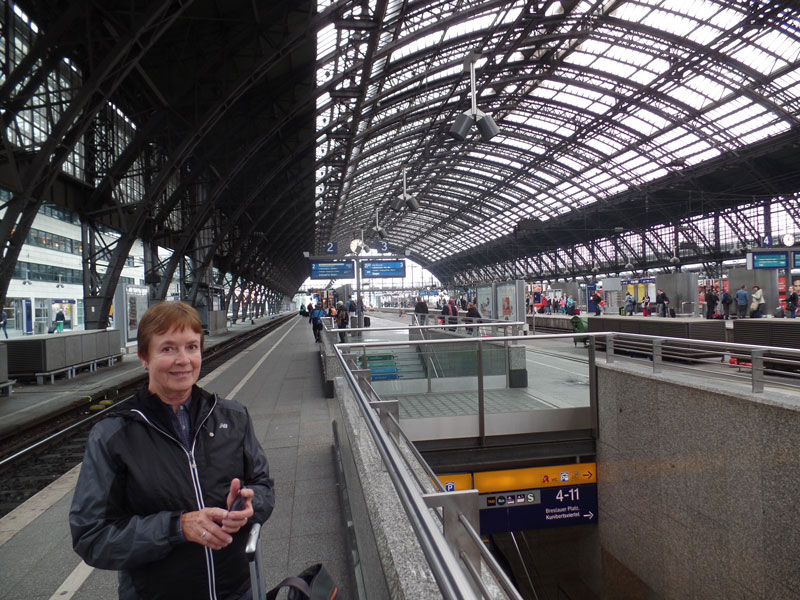
Trip to Germany and Poland
Mike and Judy Henderson
May 9 - 30, 2015
5/25/2015 Traveling from Cologne to Warsaw today we first took the train from Cologne to the Dusseldorf airport.

Our early arrival at the airport ensured that we had enough time to recover in case we got lost. We checked in with Germanwings.
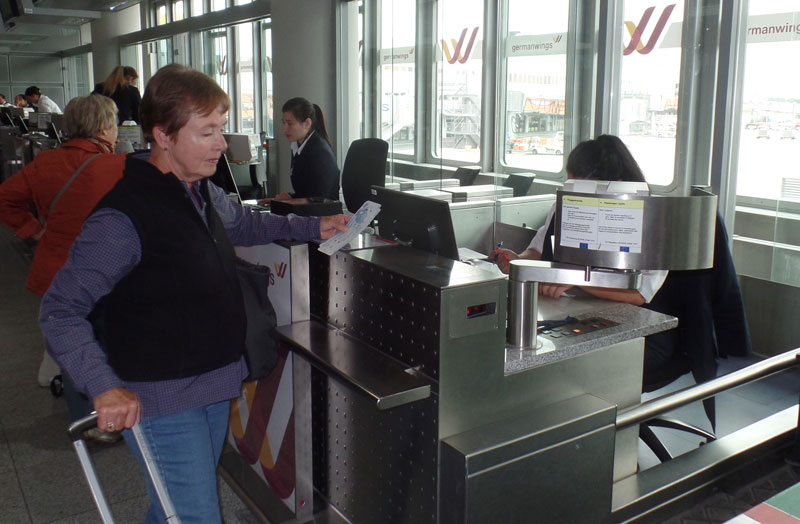
I had arranged for us to be picked up at the airport. We had a bit of trouble finding the place where the driver was waiting for us, but he was there. Here we are arriving at the hotel. It was definitely worth it to have the driver. Poland does not use the Euro and we couldn't find an ATM at the airport. The car was paid through the hotel, and in Euros.
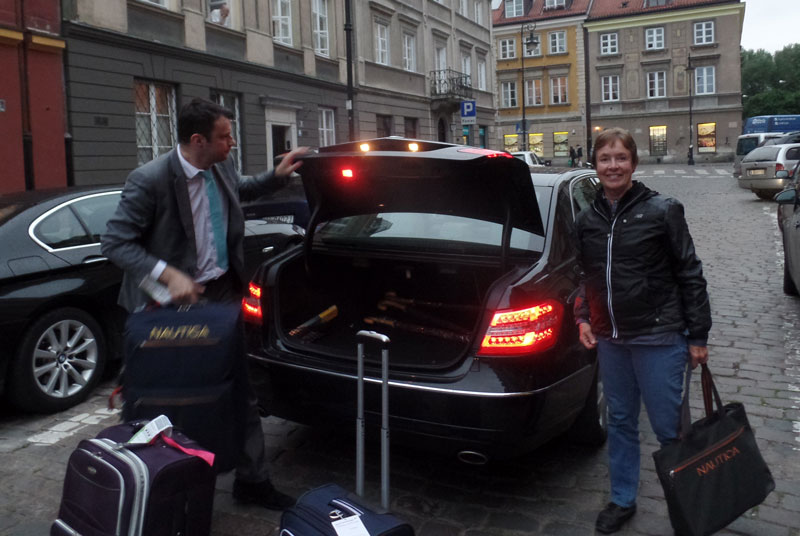
The outside of the hotel, the Mamaison Hotel Le Regina, Warsaw.

It's a lovely hotel, modern, with large rooms.
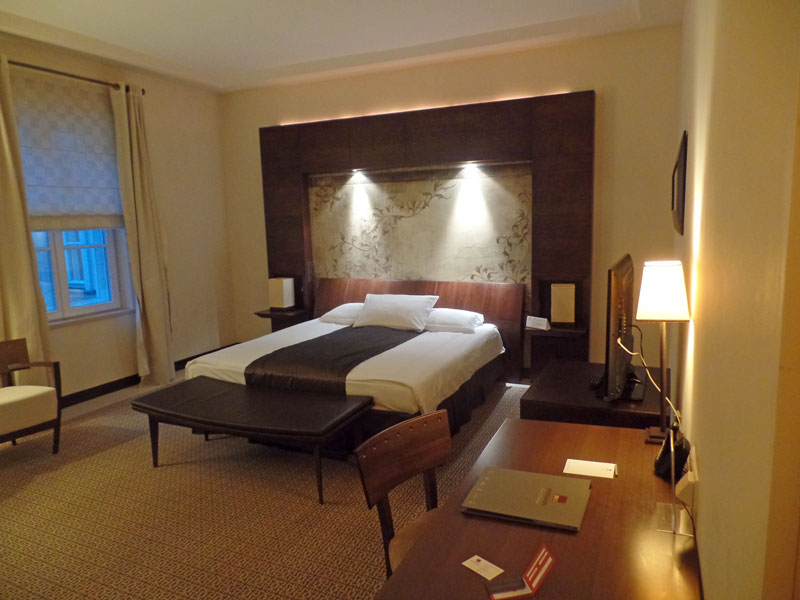
It was time for dinner, so we had a light snack and a beer in the hotel restaurant.
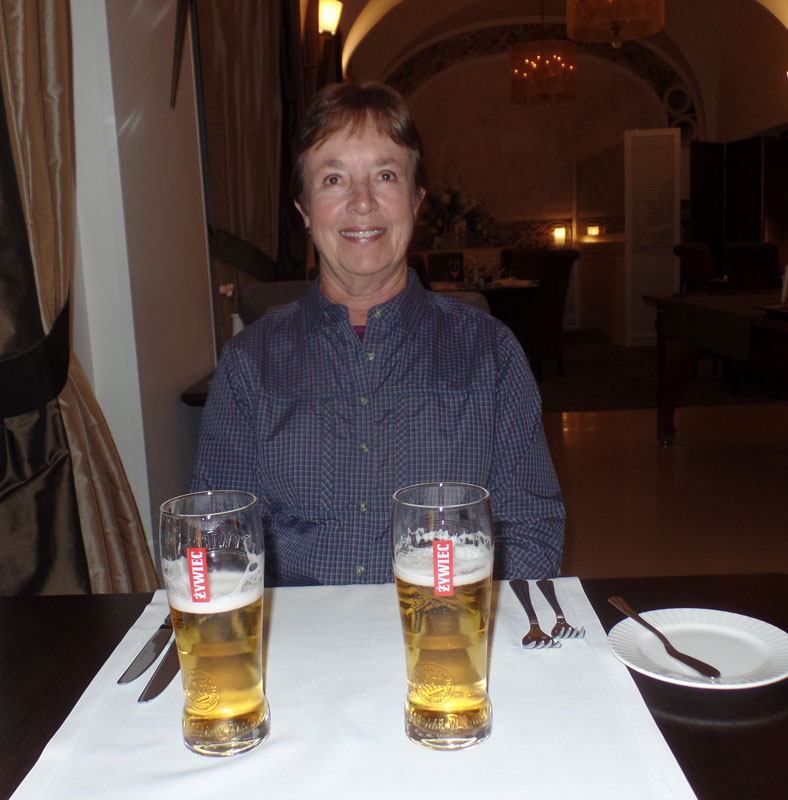
Then it was off to bed.
++++++++++++++++++++++++++++++++++++++++++++++++++++++
5/26/2015 We set up a tour of Warsaw with Pawel Szczerkowski, who I found on the Trip Advisor web site. Pawel called our room promptly at 8am and we began the tour. There's no way I can convey all of the information he gave us during the tour - I probably can't even remember it all - but I'll try to give you a flavor of what we saw and learned.
But first, I need to give you a short explanation of the recent history of Poland so that you can understand some of the things we saw and learned.
In the 1930's Hitler was looking for additional land for Germany to expand into, called Lebensraum, and looked east to Poland and Ukraine. As part of the political maneuvering at that time, Germany and the Soviet Union signed a non-aggression pact, the Molotov-Ribbentrop Pact, which was essentially was an agreement on how to divide up Poland between them. I encourage you to take a look at the links I've included here, especially the Lebensraum link. It will help you understand why Germany invaded Poland, and eventually the Soviet Union.
Hitler ordered the invasion of Poland, which began on September 1, 1939, and on September 17, 1939 the Soviet Union invaded Poland from the east. The Poles were overwhelmed and defeated. Both the Germans and the Russians began a purge of Poles, especially anyone who might serve as a leader. And by "purge" I mean mass executions.
The Polish government had escaped to England and continued to function in exile. A side note here: Polish experts had reconstructed the German "Enigma" code machine and had done quite a bit of work towards breaking the code. They turned all of this over to the British who eventually broke the code. When the British tell the story of the breaking of the Enigma code at Bletchley Park, they usually ignore the contribution of the Poles to their success.
But Poland was to suffer even greater destruction as the war went on. In 1941 Hitler invaded the Soviet Union. While initially successful, the Eastern Front became a meat grinder for both the Germans and the Russians. Russian losses were terrible. Historians estimate that the Soviet Union lost at least 25 million killed during the war. But the Russians essentially destroyed the German army. Without the war on the Eastern Front, we would never have been able to land successfully at Normandy.
But back to the Eastern Front. As the Germans retreated, they eventually fell back to Poland and Warsaw. Seeing that the Russians were close to Warsaw, the Poles rose up and attacked the Germans. But the Russians held back and let the Germans destroy the Polish resistance. This part of the war essentially completed the destruction of Warsaw. At least 85% of the buildings in Warsaw were destroyed. So when you look at the city, what you're seeing is mostly rebuilt buildings, perhaps built to look like they did prior to the war, but also new buildings
The second part of this story is the persecution of the Jews. In 1939 approximately 10% of the Poles were Jews. The "Final Solution" evolved over time but from the very beginning the Jews were targeted for extermination. The Jews of Warsaw were moved to the Warsaw Ghetto. Although the Jews fought back, the residents of the Ghetto were essentially all killed, about 300,000. Such statistics are just numbers until you visit a place like this, and you see the places where the residents were taken to be loaded on railroad cars for shipment to an extermination camp.
After the war, the Poles lived under Soviet control. While they had their own government, it was controlled from Moscow. In 1989 - the same time as the fall of the Berlin Wall - mass demonstrations were held in Warsaw and a new, democratic, government formed, essentially creating modern Poland.
While this is only a very short summary of the background of Poland and Warsaw, I hope it will give you a better understanding of some of the things we saw.
I was very interested in the food of Poland so I had asked Pawel to take us to a "local" place for breakfast. He explained that most Poles eat breakfast at home but did find what he called a "Milk Bar" which dated back to the time of Soviet control of Poland.
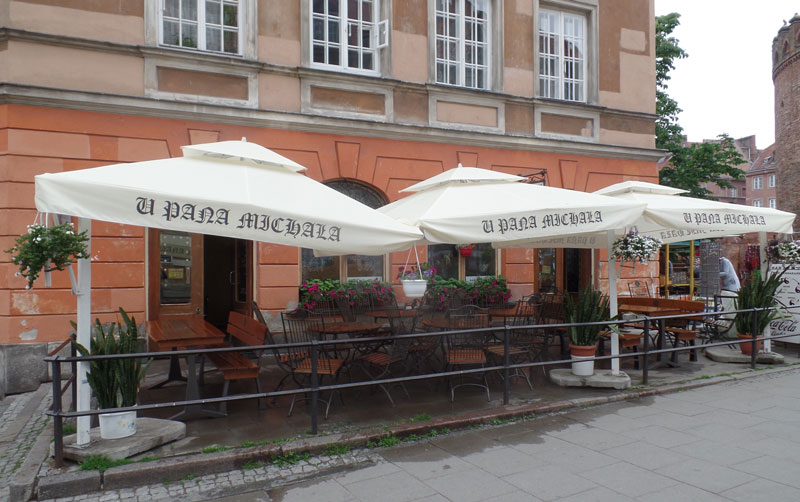
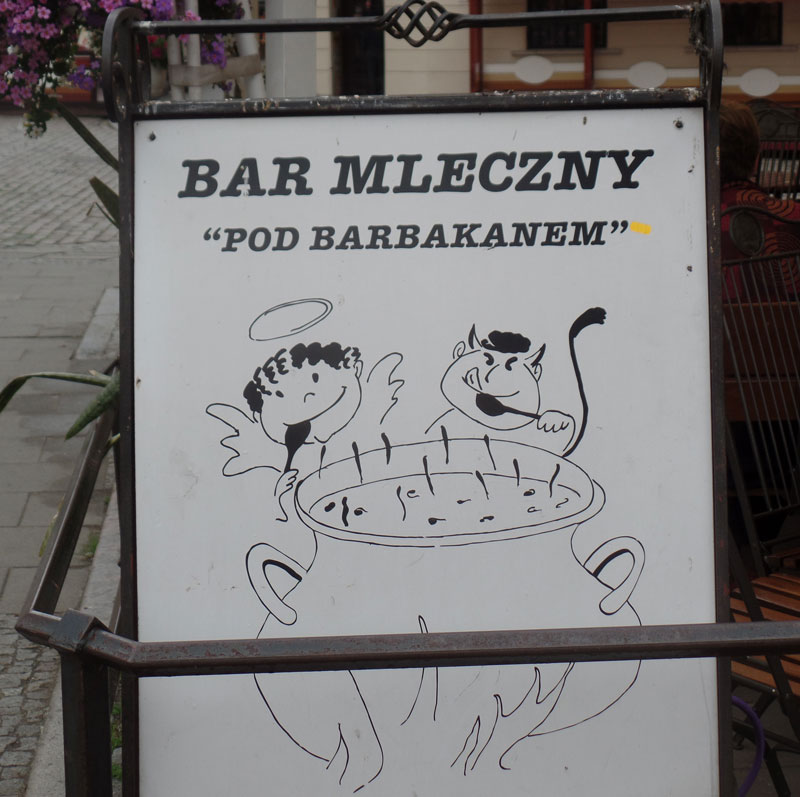
The inside of the restaurant. It really had a "Communist" atmosphere - the woman at the register was not friendly and didn't seem to care whether we stayed or not. Milk bars were typical of the Soviet era, and are now making a come-back as a bit of nostalgia.
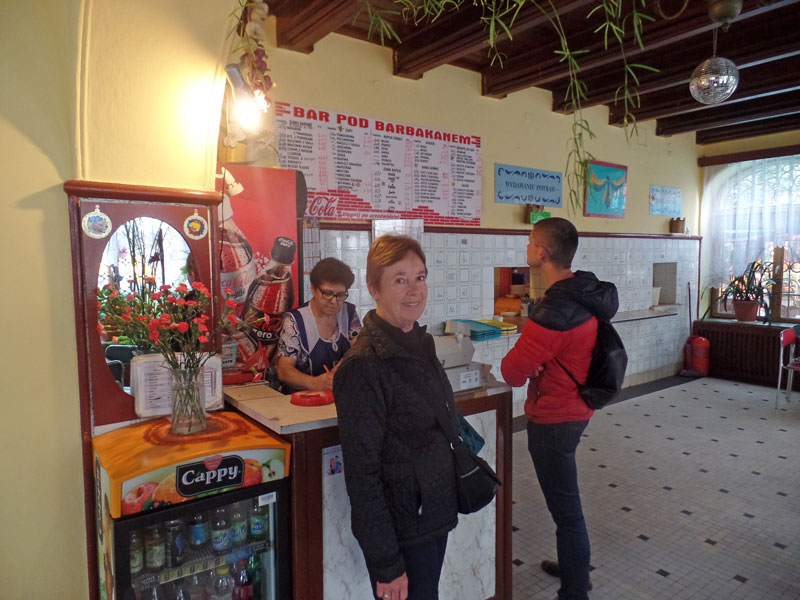
The breakfast: Judy and I had coffee and a spinach omelet and Pawel had cottage cheese and pancakes with a cream sauce. I can't say it was the best breakfast I've ever had, but it was memorable.
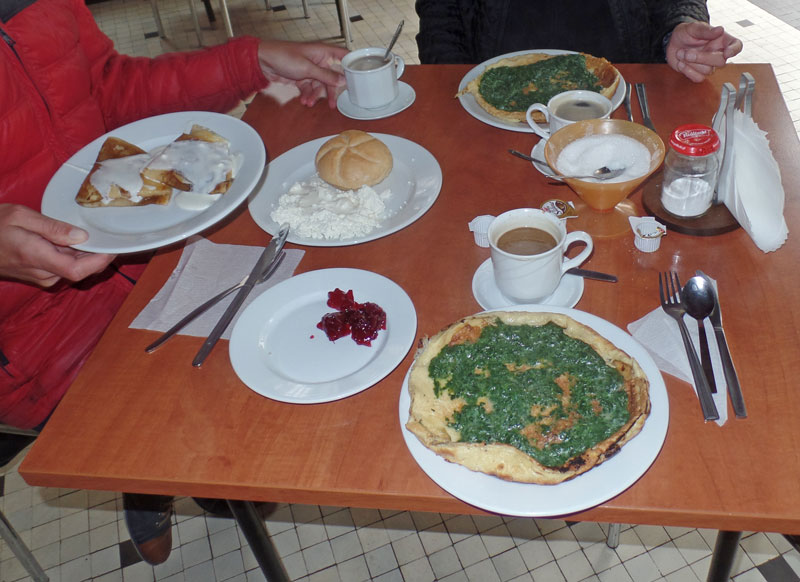
It was very near the house of Marie Curie, who won two Nobel Prizes. She discovered Radium and Polonium, indicated on the house by their chemical symbols of Ra and Po. Polonium was named for Poland.
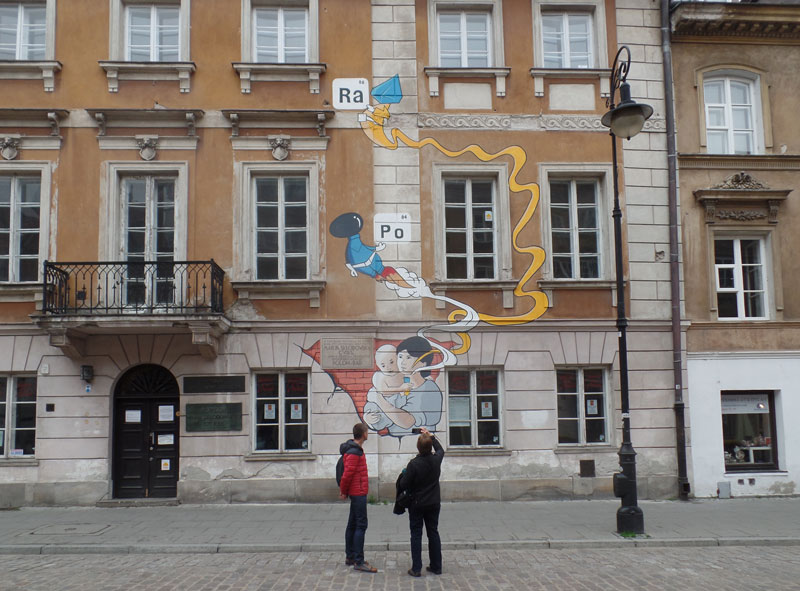

We walked down the main street, into the old town to the market square.
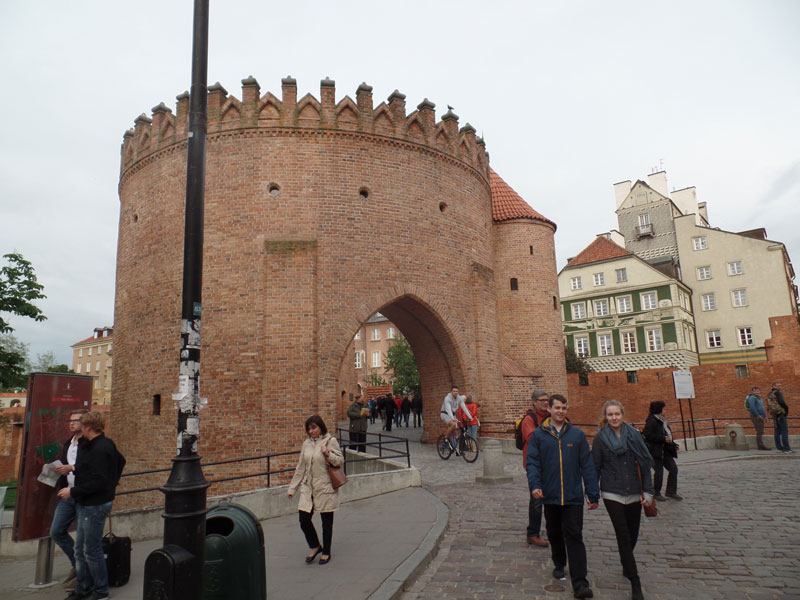
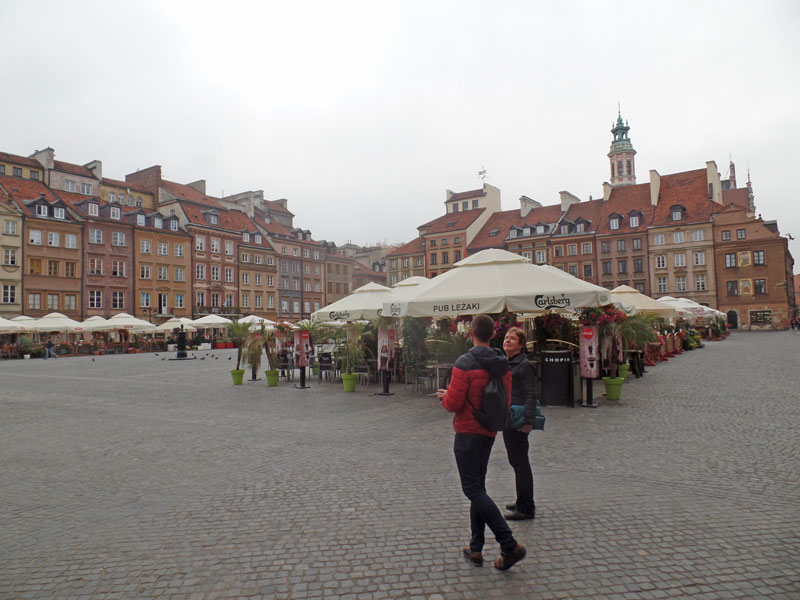
In the center of the square is a statue of a mermaid with a sword and shield. She is the symbol of Warsaw, although historians do not know why a mermaid was chosen as the symbol.
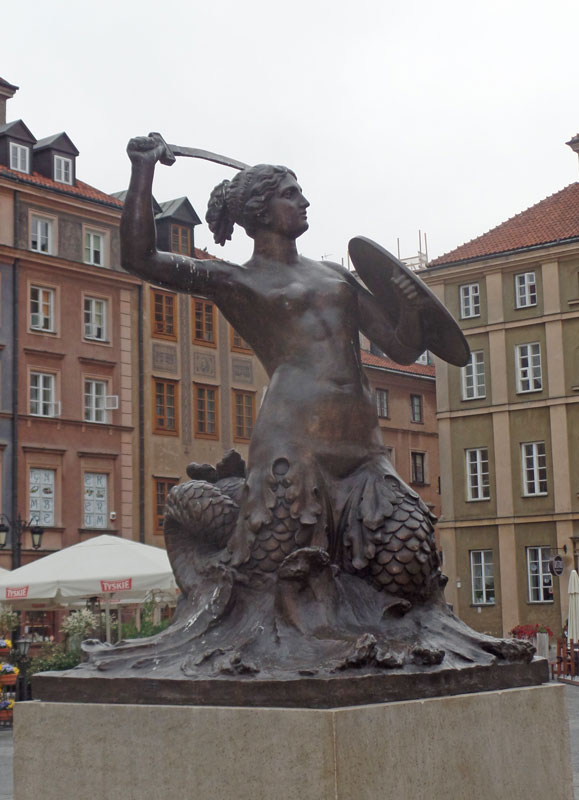
We walked past the Royal Castle to the "Royal Road", which is a main road through central Warsaw with lots of shops, restaurants, government buildings, and churches. People were setting up displays for the upcoming soccer playoff that was to occur the next day.
The Royal Castle:
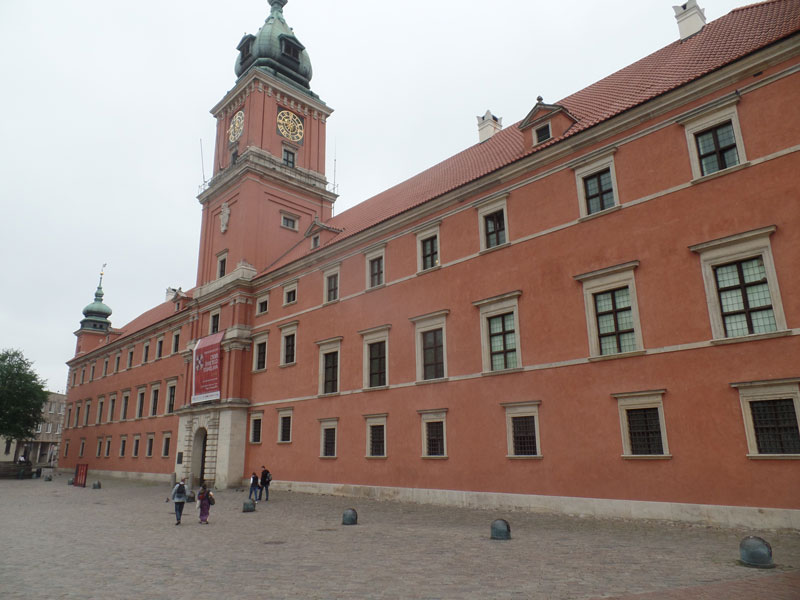
And the "Royal Road", Krawowskie Przedmiescie.
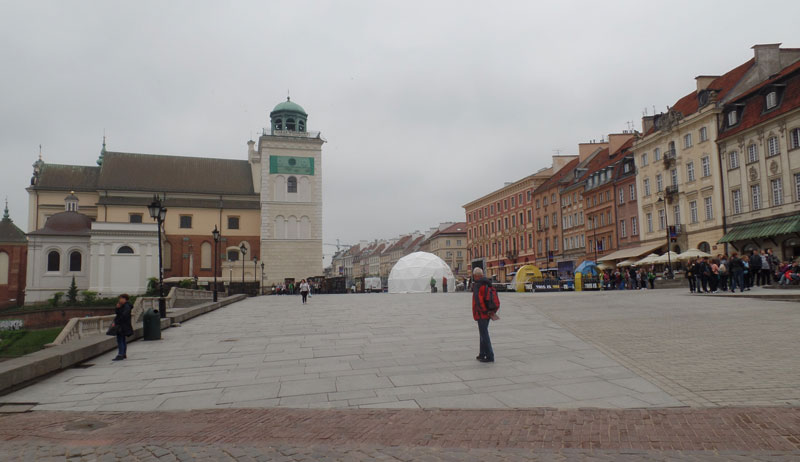
The Presidential Palace.
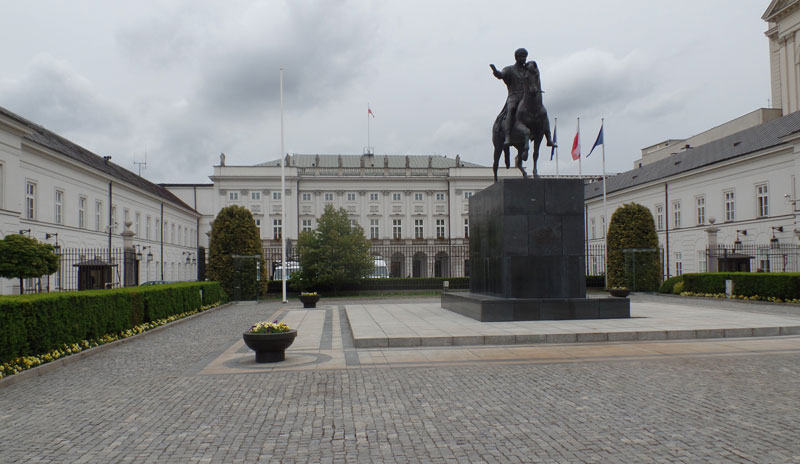
TV cameras were in front of the palace - preparing for a press conference.
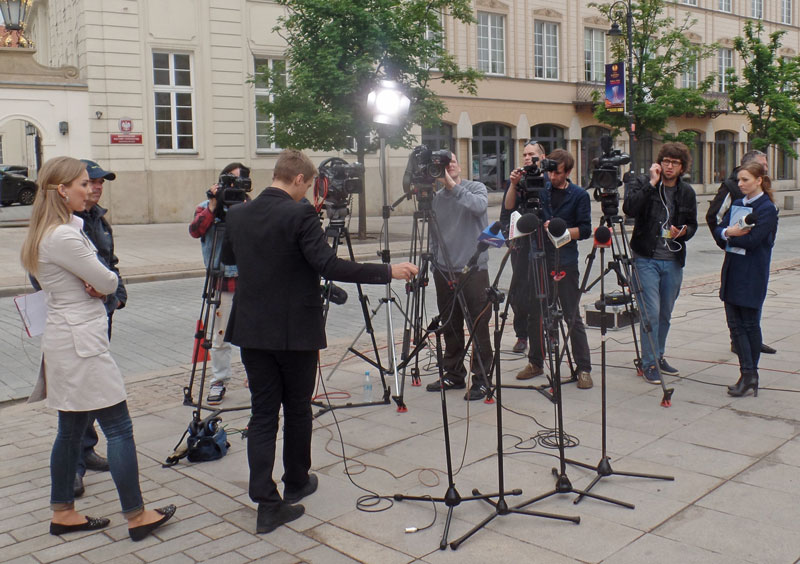
A residence of Chopin when he was in Warsaw.
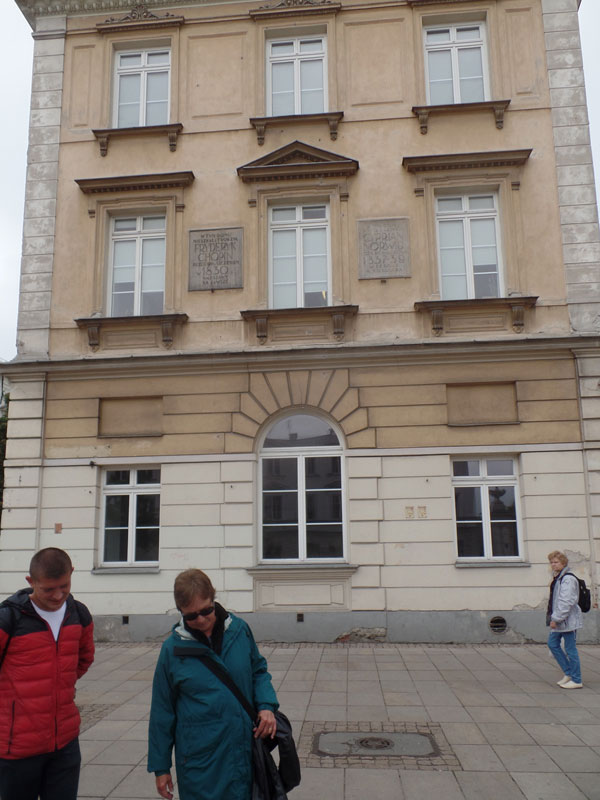
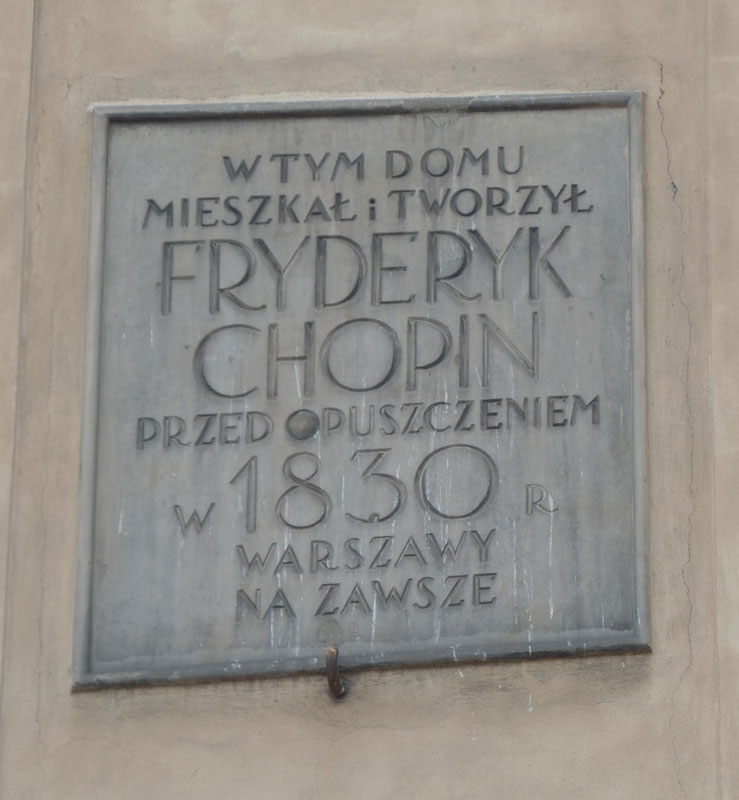
We visited Holy Cross Church, which was Chopin's parish church and is now where his heart is interred.
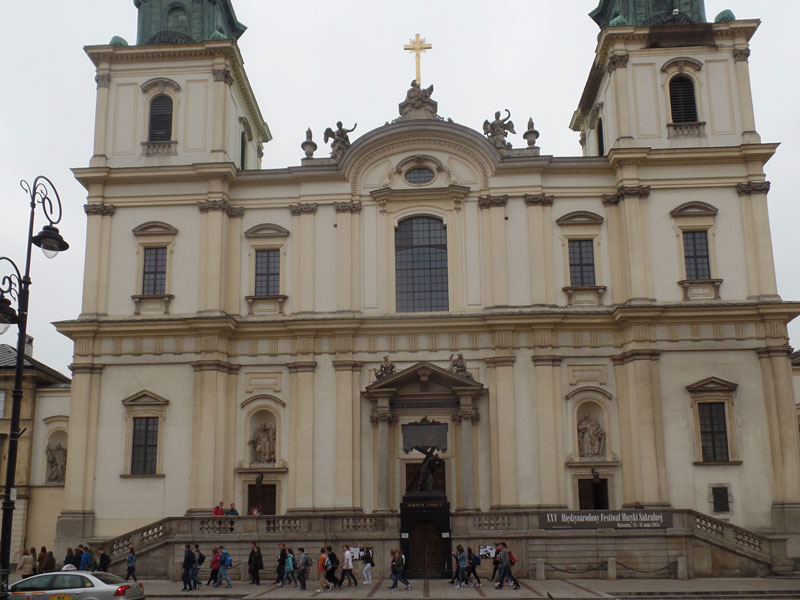
In the early 1800's, Poland came under Russian occupation. After the 1830 uprising, Poles were required to sign a declaration of loyalty to the tsar. Chopin, and many other prominent Poles, refused to sign and could not return to, or had to leave, Poland. Chopin went to Paris, where he had an affair with George Sand. You've probably seen pictures of her in her older age, but pictures of her when she was young indicates she was quite a beautiful woman. Chopin died in Paris in 1849, at the age of 39, of tuberculosis. He realized that Poland would not allow him to be buried there so he made his sister promise to take his heart back to Warsaw and have it interred there. She put the heart in a jar of the best French cognac and took it back to Warsaw, passing through a number of customs checks. At one check she was asked if she was carrying any contraband and she said she had come back from Paris where her brother had died and she was carrying his heart back to Poland. The customs agent thought she was mentally unstable and just passed her through. His heart is now in the Holy Cross Church. The rest of his body is buried in the Pere Lachaise Cemetery in Paris (which, incidentally, is where Jim Morrison of The Doors is also buried).
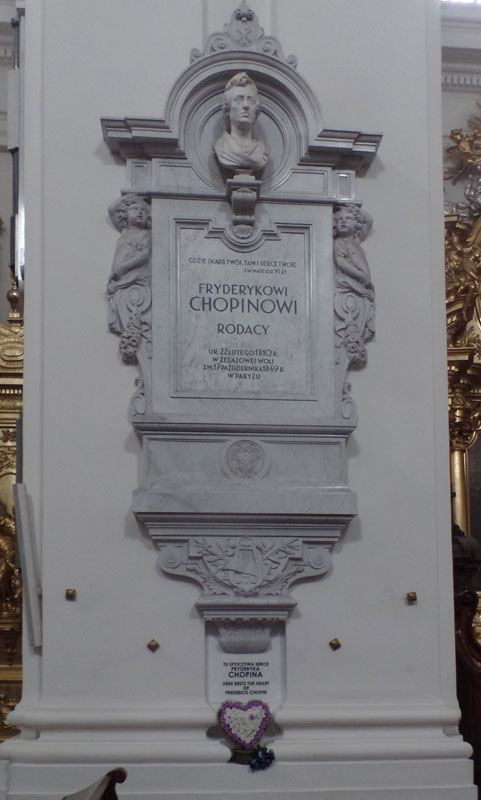
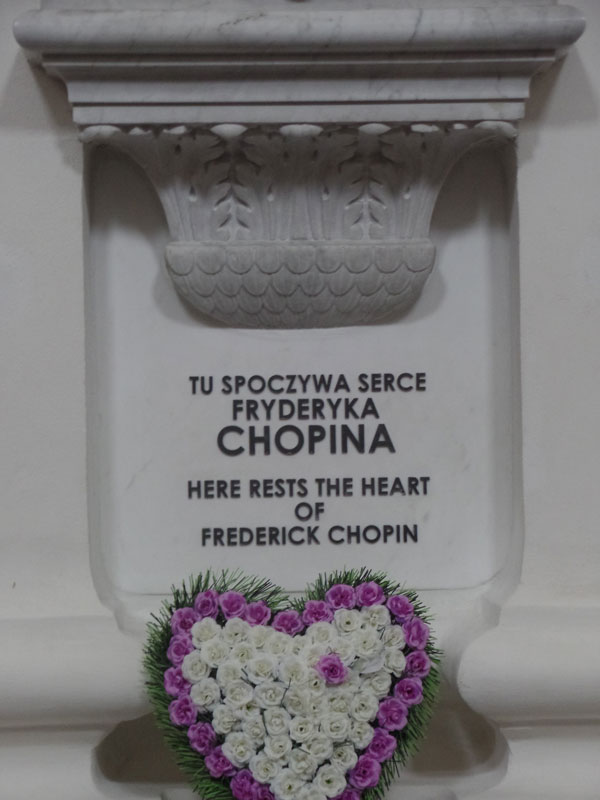
Here's Judy and Pawel at the Holy Cross Church.
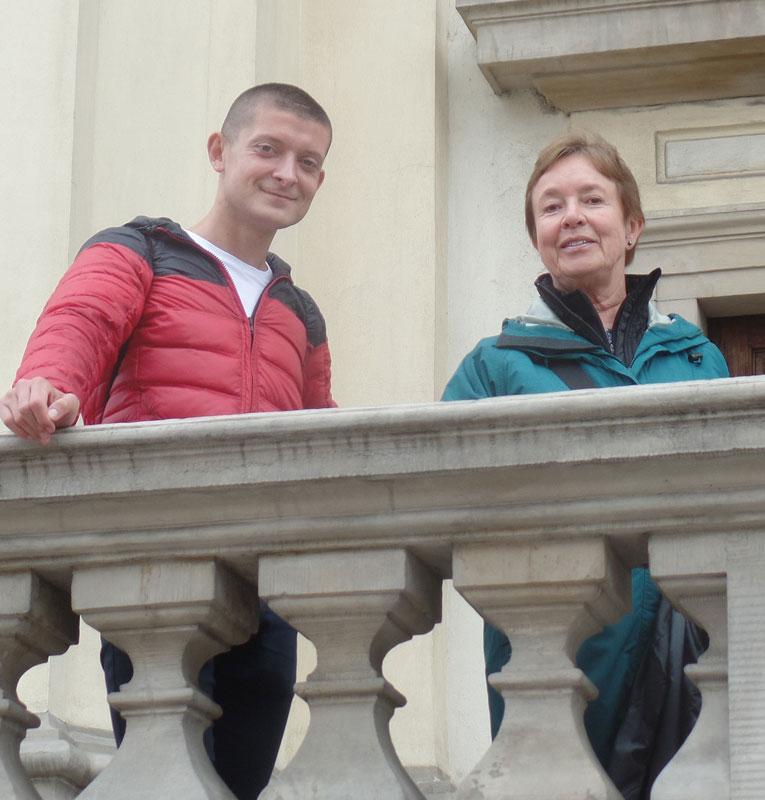
We continued down the Royal Road and came to a statue of Copernicus. The cobblestone base has concentric circles with each of the planets known at the time of Copernicus - Mercury, Venus, Earth, Mars, Jupiter, and Saturn, laid out in the proper relationship to each other.
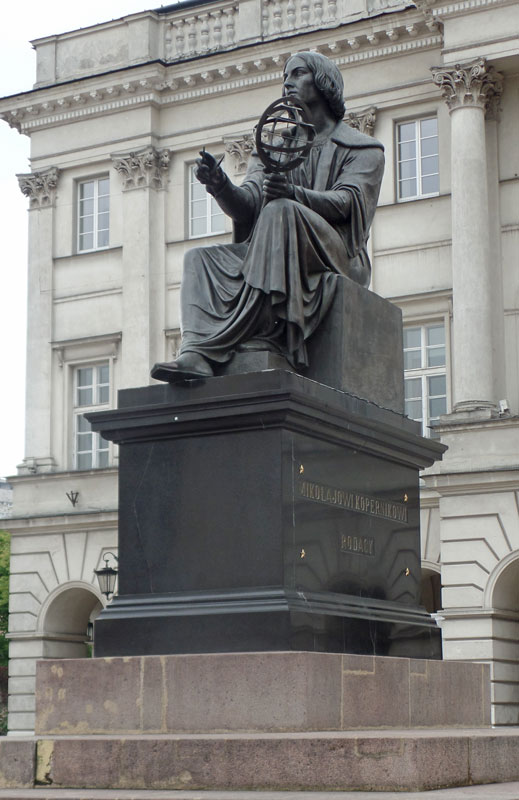
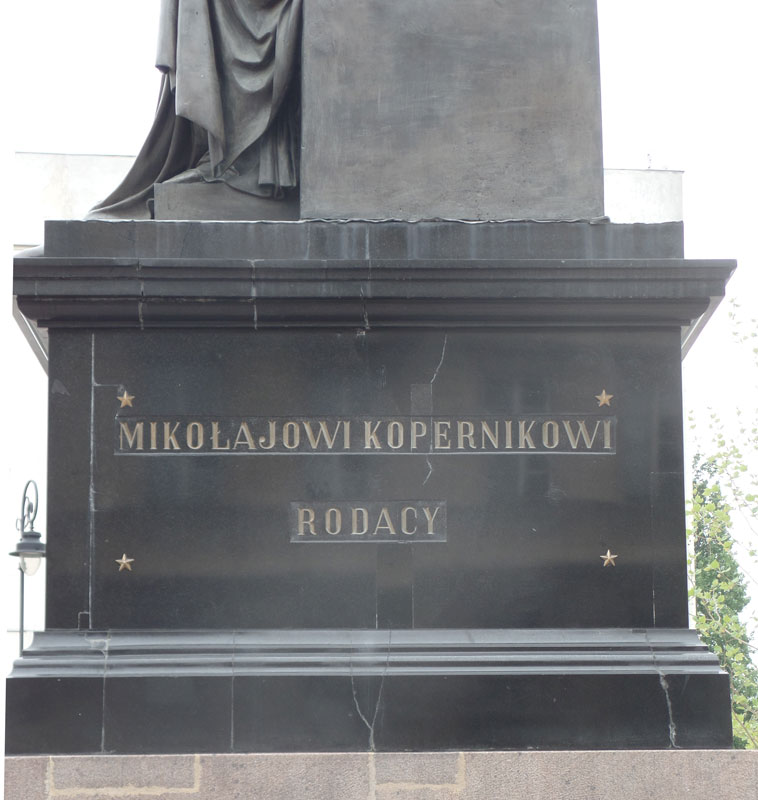
Next we drove to a location to view the notorious Soviet-built Warsaw Palace of Culture and Science. A hideous example of Soviet Realist architecture, it sticks up in the Warsaw skyline.
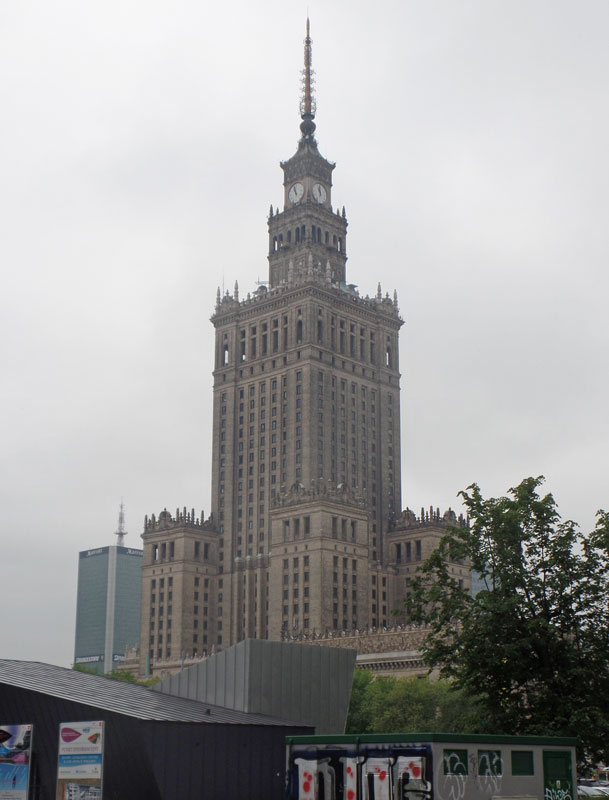
Then we drove to the Royal Baths Park which has a statue dedicated to Chopin. The statue was installed in 1926 but destroyed (blown up) by the Nazis in 1940. After the war, the original mold (which survived the war) was used to cast a new statue which was dedicated in 1958.
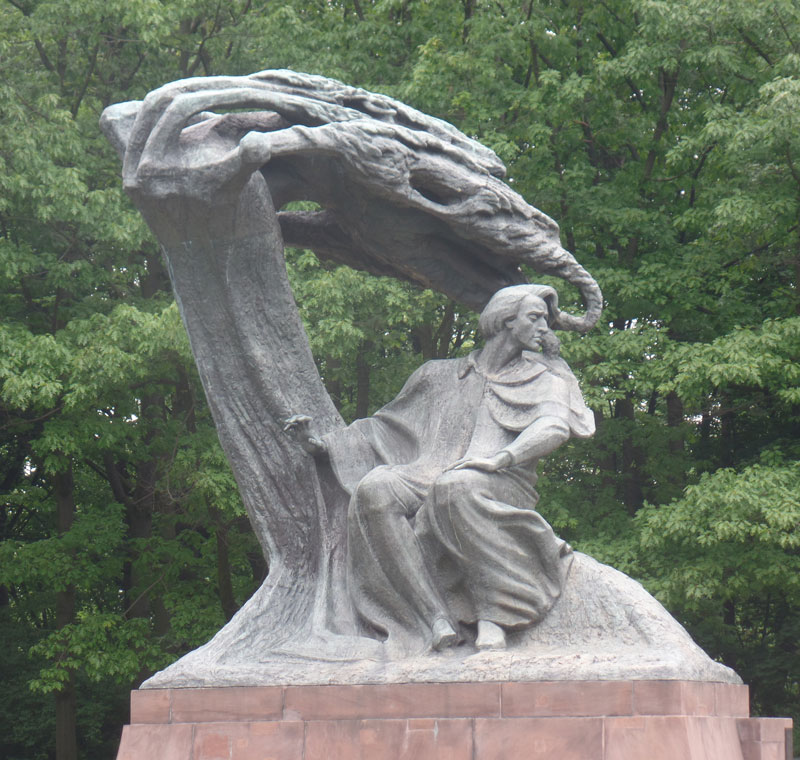
We then drove to the Museum of Jewish History in Poland. It was closed on Tuesday but we were able to walk the grounds.
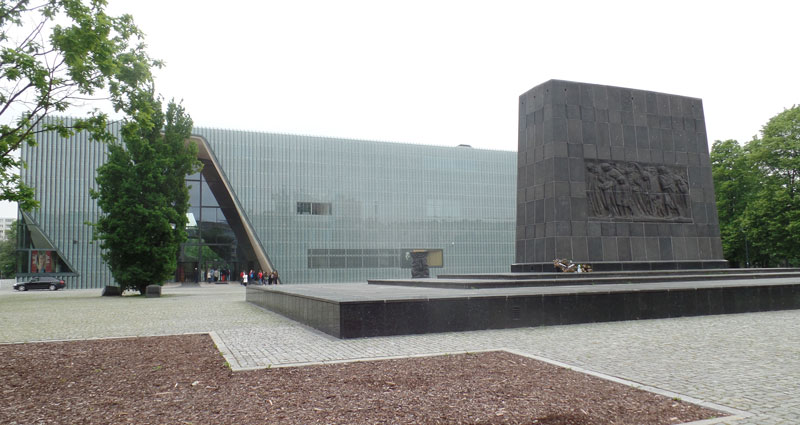
The monument in front of the museum has two faces, one commemorating the Jewish fighters of the Warsaw Ghetto and the other side commemorating the Jews who were sent to the extermination camps.
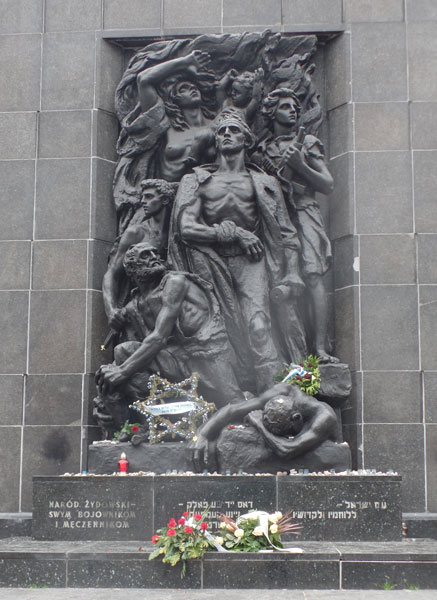
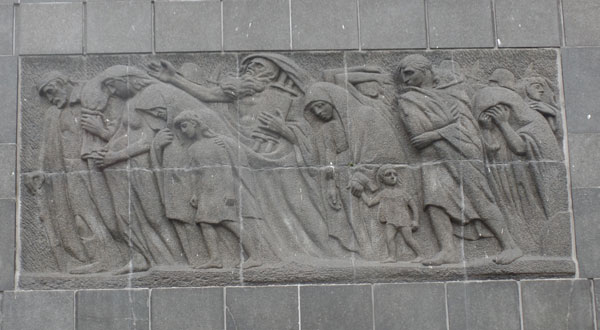
After a long drive we arrived at the house where Chopin was born. It had been a long time since breakfast, so we went into the restaurant next to the Chopin museum for lunch. Here are Judy, Pawel, and our taxi driver.
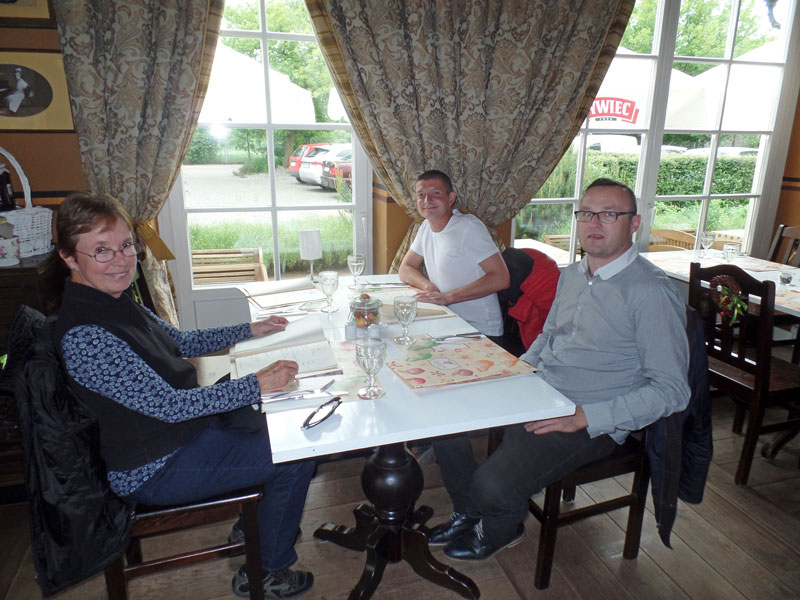
Judy and I tried a local soup, the traditional beginning to a Polish meal.
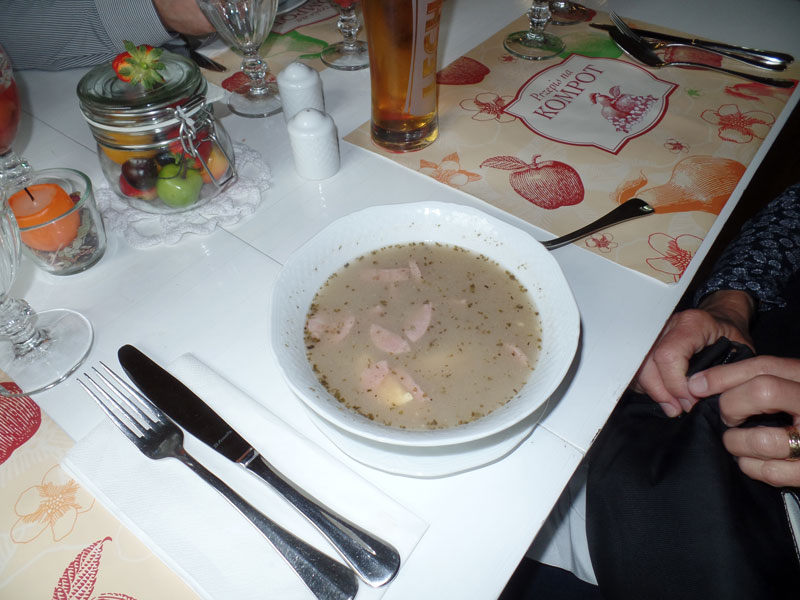
After lunch we went to the museum, only to find that the Chopin house was closed for renovation. A hard rain made it impossible to even walk the grounds. So we ran to the taxi and headed back to Warsaw.
As a last thought, Pawel took us to a Warsaw donut place where we got a Warsaw-style jelly donut. This place is fairly famous.
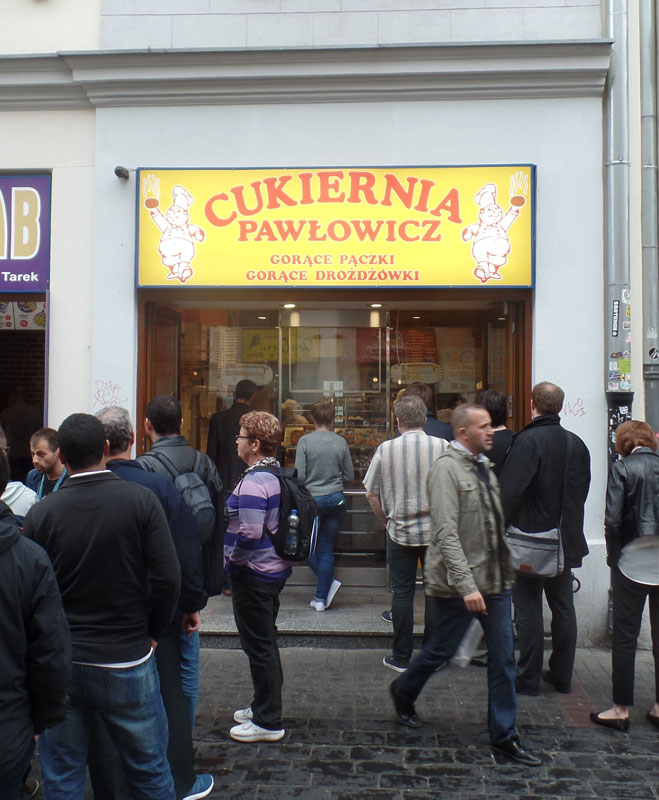
Pawel and Judy with their donuts.
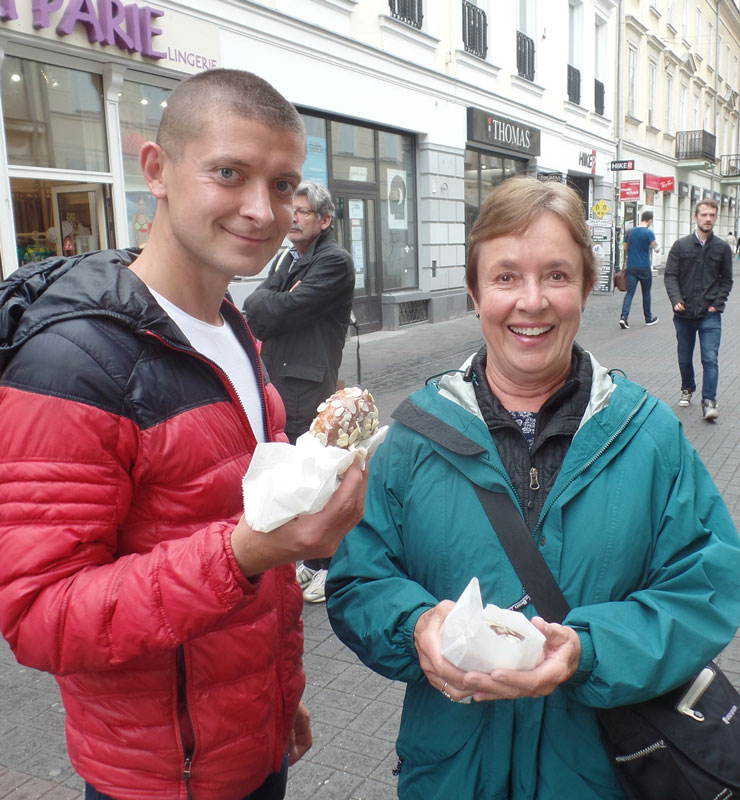
This finished our tour and we returned to the hotel, tired but very satisfied with the day and the things we had seen. Pawel did a great job of showing us Chopin's Warsaw - and Warsaw in general - in a single day.
We enjoyed a beer and some nuts downstairs in the hotel lounge and then headed upstairs to bed.
+++++++++++++++++++++++++++++++++++++++++++++++++++++
5/27/2015 Today, the major thing is a tour with Eat Warsaw. This tour will take us to a number of restaurants in Warsaw, sort of a progressive dinner, where we'll sample Polish food. The tour didn't start until 1pm so we decided to get some breakfast. The restaurant has a very good breakfast but at 28 Euros per person, we decided we'd look for something less expensive. Finding a breakfast restaurant in Warsaw is a challenge - restaurants just don't do breakfast.
We tried one place that was open, but there was no one in it. And by no one in it, I mean no one running it. So we decided to try the "Communist" place we had gone to yesterday. However, the woman at the register was definitely uninterested in working with us to place an order, especially since we spoke English. So we gave up and searched elsewhere.
We found a nice little coffee shop that also sold pastries and had a cup of coffee and a pastry.
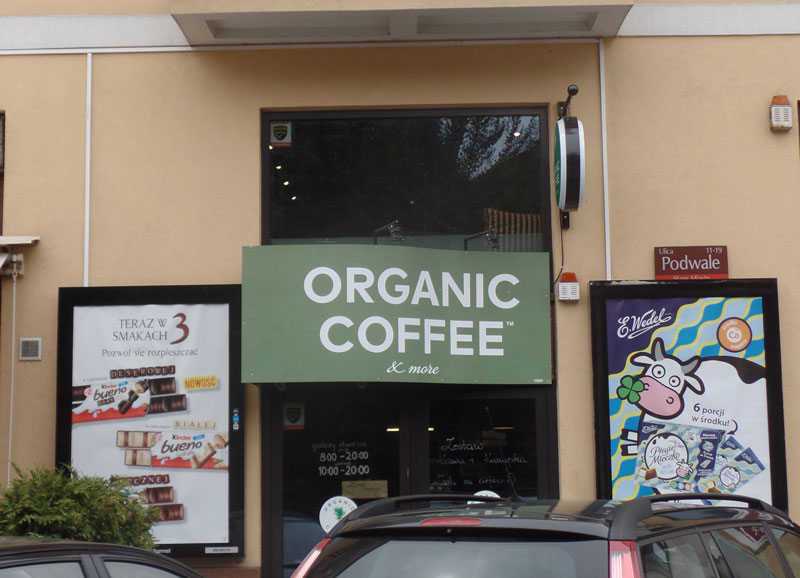
Judy at the coffee shop.
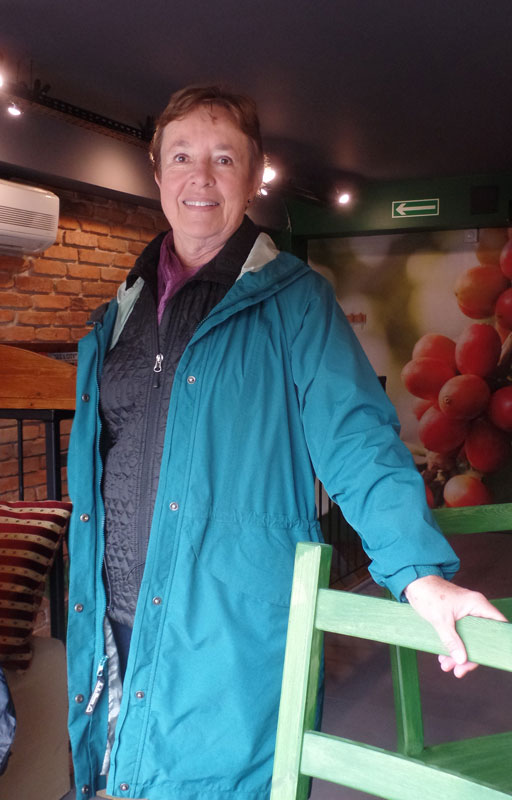
After coffee, we stopped at St. Anne's Church which is an interesting church with a Baroque organ. They have organ concerts every day at noon and Judy may go to the concert tomorrow. Here's the view to the alter.

And a view of the organ.
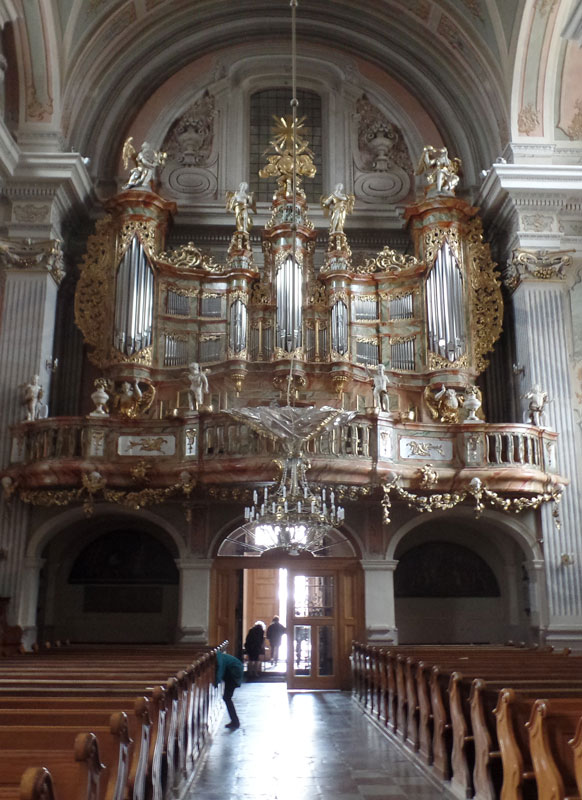
Then we walked to the meeting point and met Magda of Eat Warsaw.
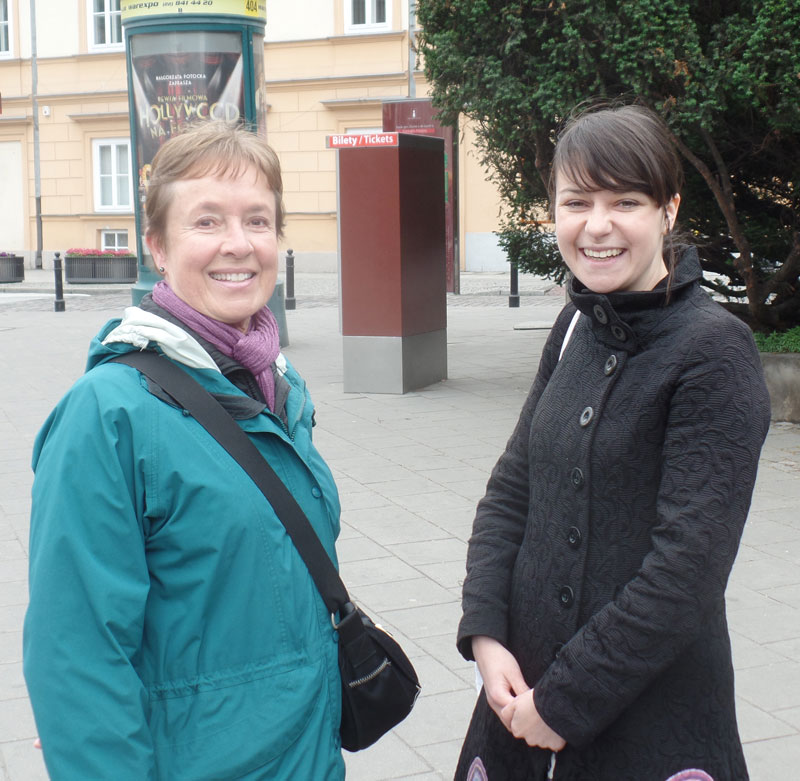
After introductions, we headed to the first restaurant where we had the soup course. Vodka was offered but neither Judy nor I are vodka drinkers so we just tasted the vodka.

The first was barszcz czerwony z uszkami - a beet soup with sauerkraut dumplings.
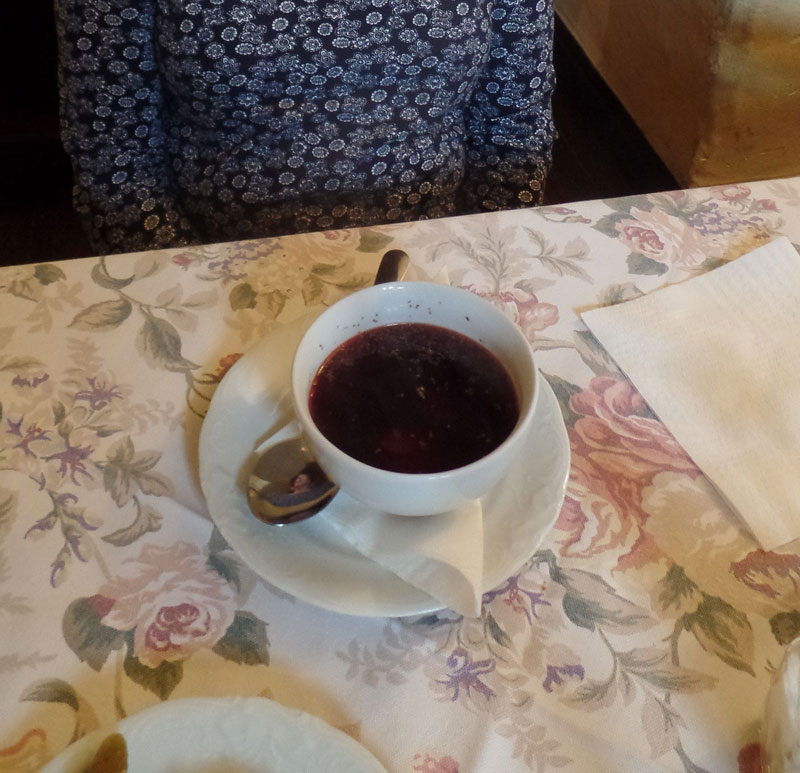
The second soup was kapusniak - a vegetable soup of potatoes, cabbage, carrots, parsnip, and parsley root.
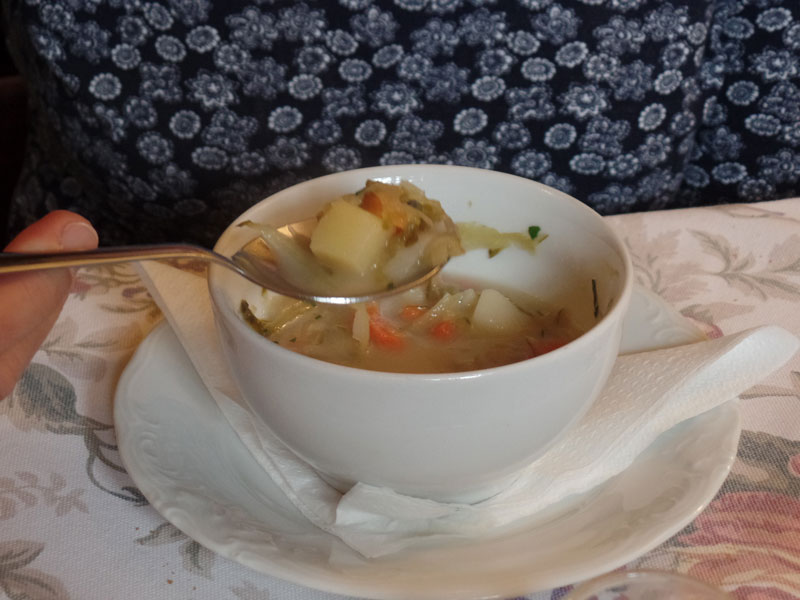
For the next course, we walked through an interesting section of Warsaw until we came to the restaurant.
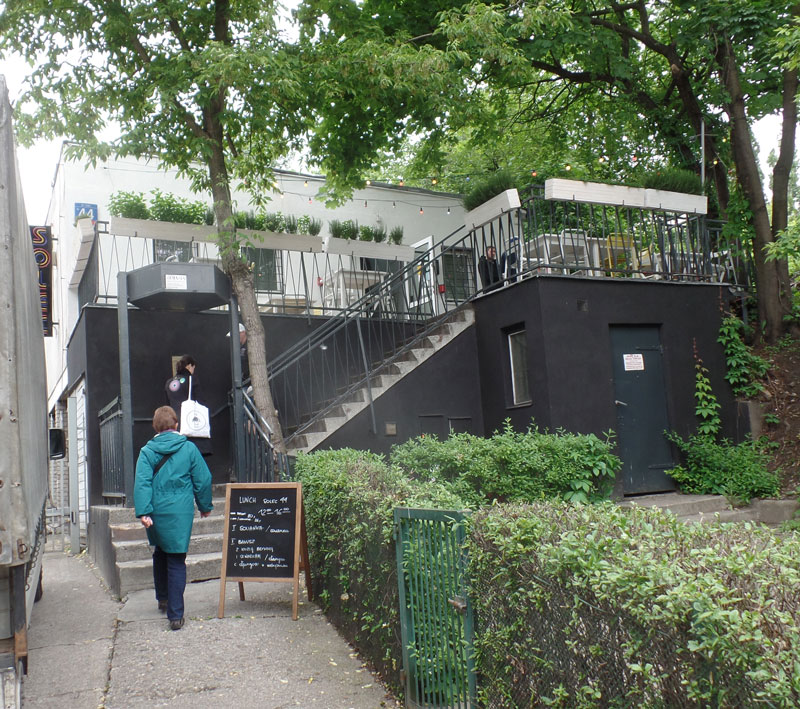
Here, we had the cheese and meat course. The restaurant was part of a developing "eat local" movement in Poland. Magda said that all the food was all produced by small farms within 100 km of Warsaw. The cheese was very good but the blue type was too strong for us. The sausage and ham were excellent.
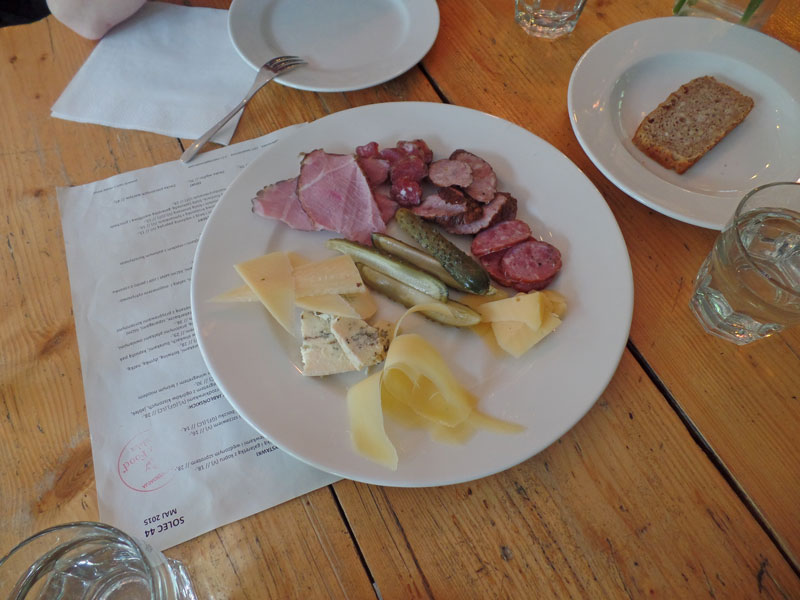
When we completed this course, we headed for the "main course" at Krystian's Kitchen.
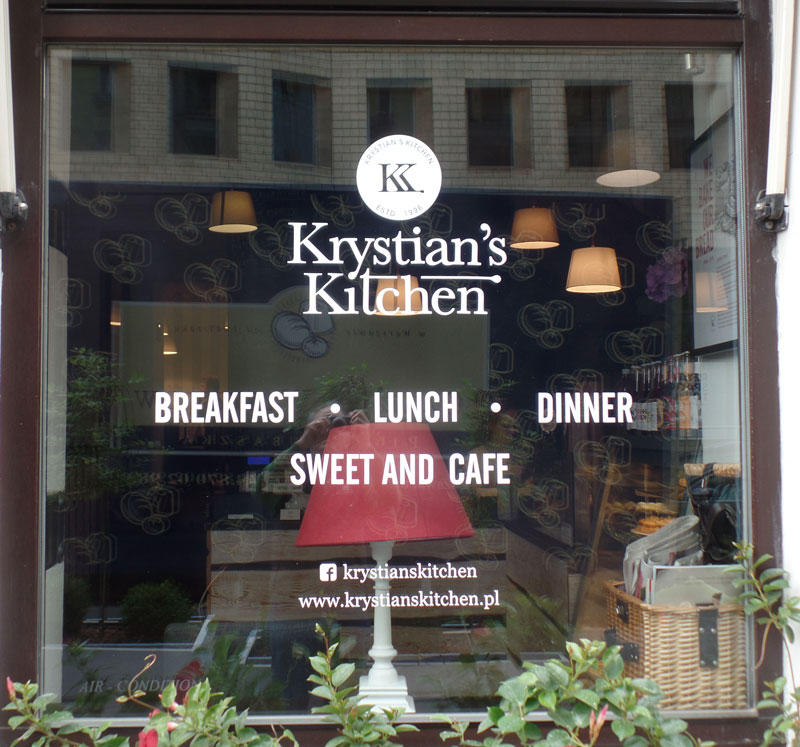
It was a very nice restaurant - clean and well appointed.
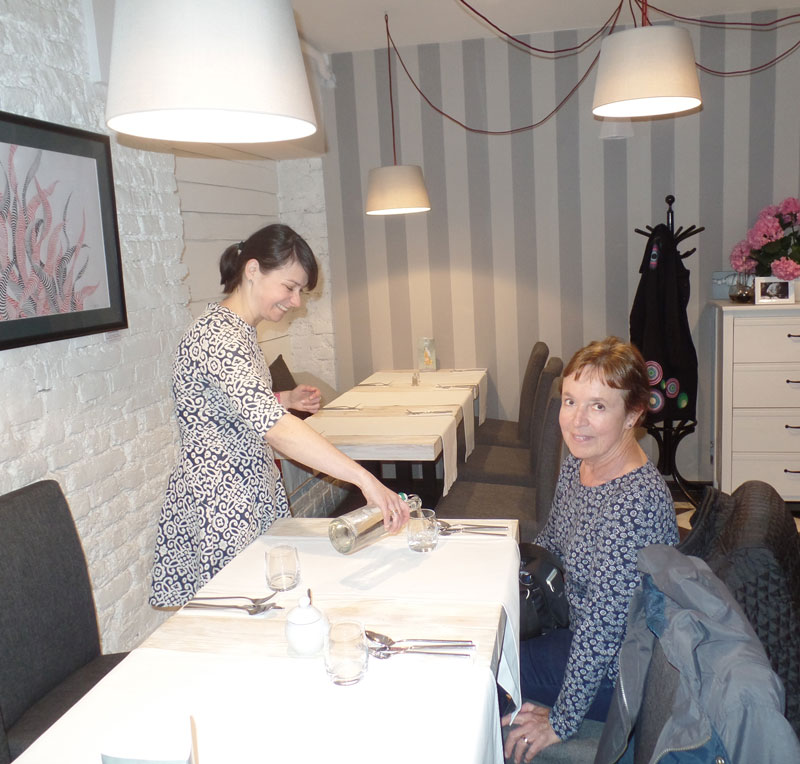
We had a Polish version of schnitzel, along with mashed potatoes and cumbers. Judy and I had had schnitzel all across Germany, some better than others, but this schnitzel was better than the schnitzel we had had in Germany.
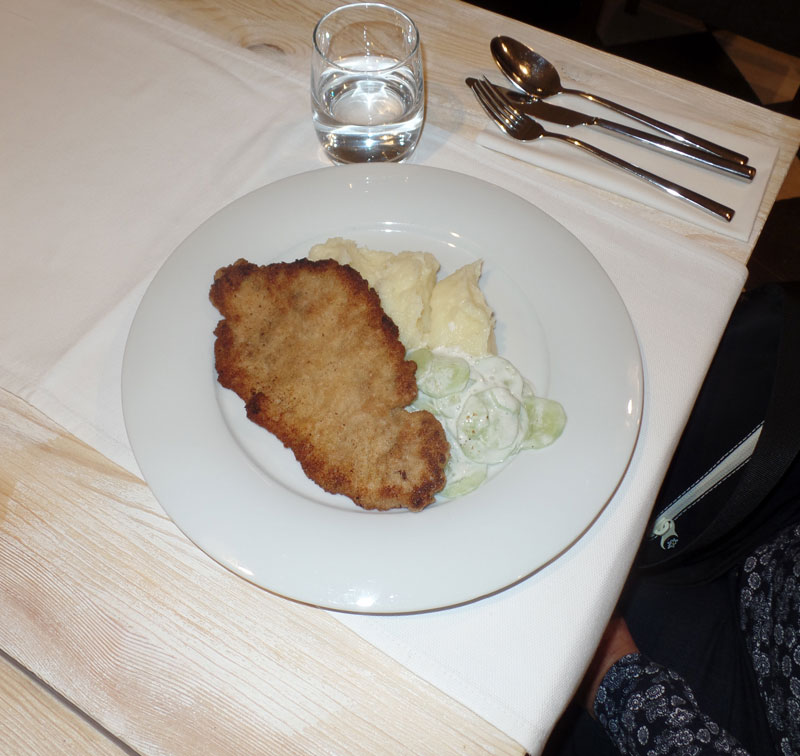
The chef came out and offered us a taste of Polish cheesecake and coffee - and posed for a picture.
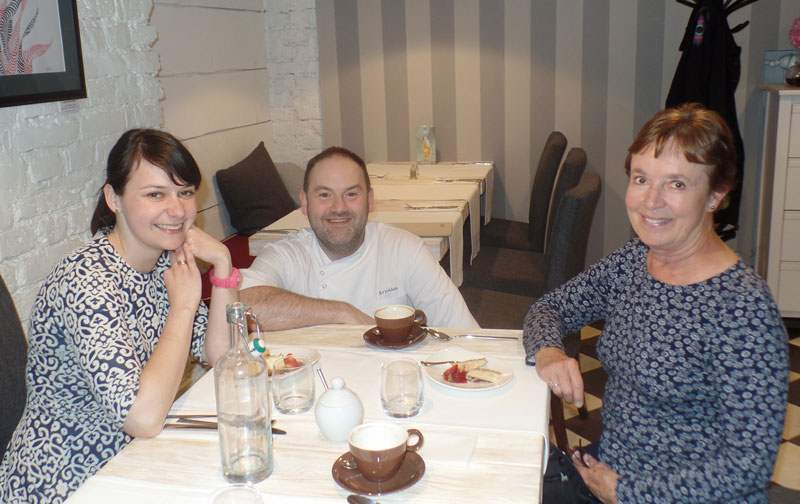
By this time, you can imagine we were pretty full. But Magda had one more thing to tempt us - a visit to the chocolate factory.
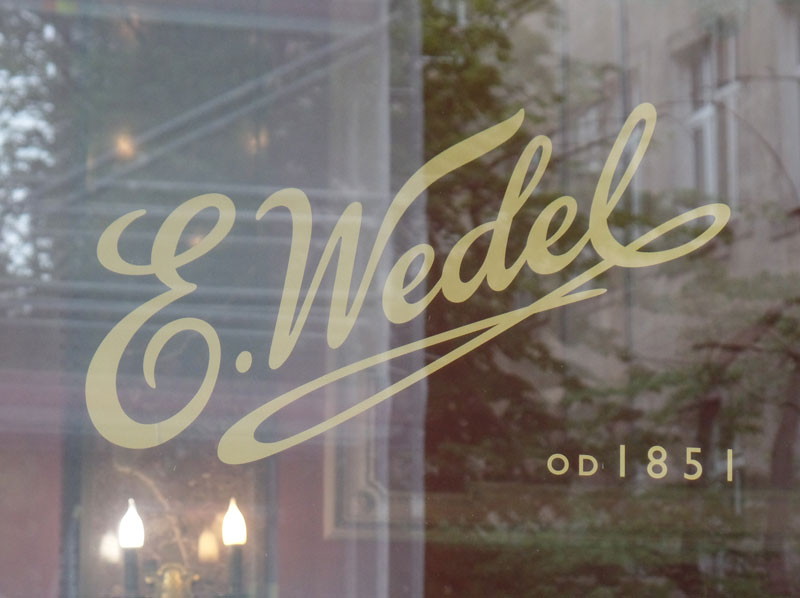
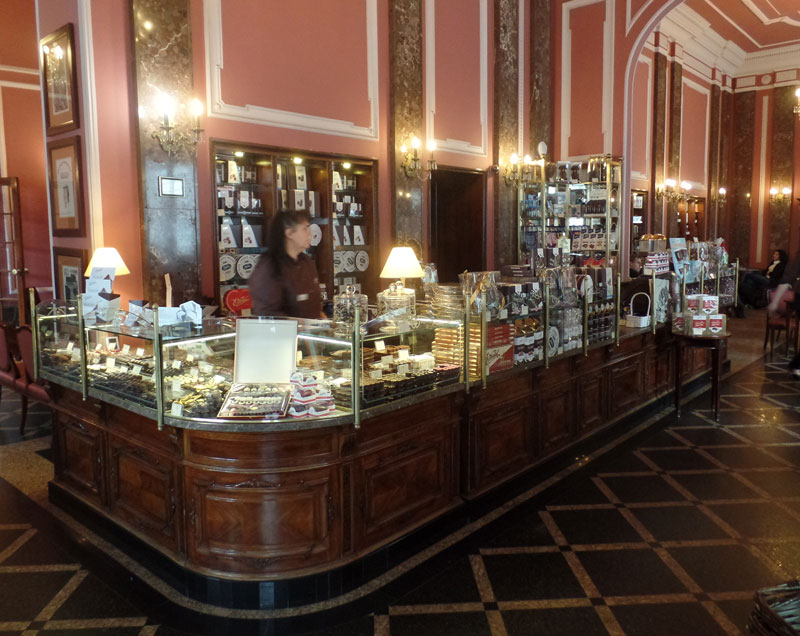
Here's Magda and Judy in the factory restaurant.
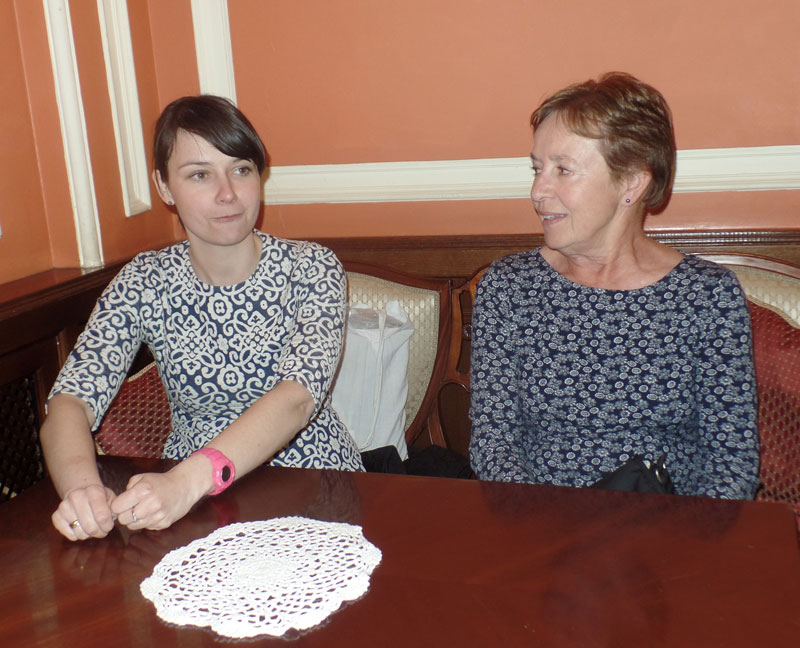
We each had a cup of chocolate milk that was almost chocolate syrup. Excellent!
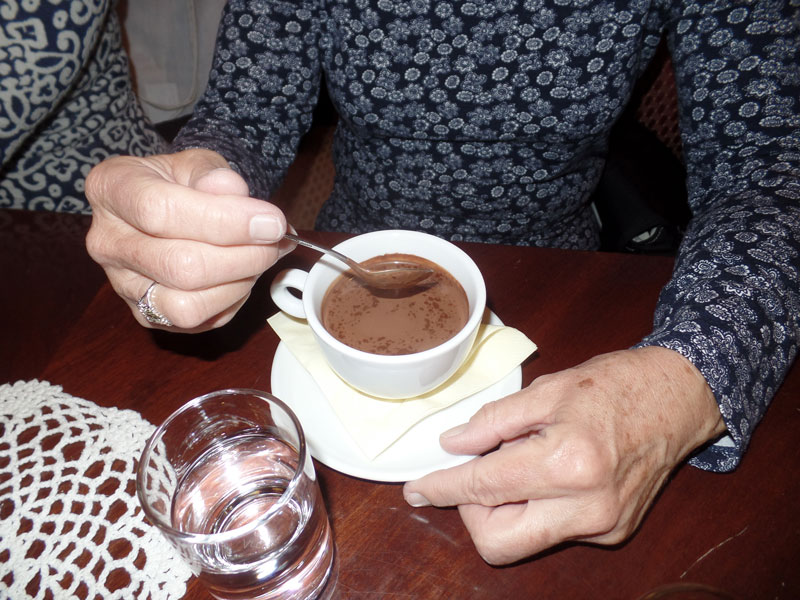
And that was the end of our progressive dinner, and a good thing too. I couldn't even think of eating anything else.
We took our time walking back to the hotel and did not go out again. And it's just as well. The big soccer game is tonight and after the game I expect the winners will be celebrating and the losers will be drowning their sorrows. Best to stay out of their way.